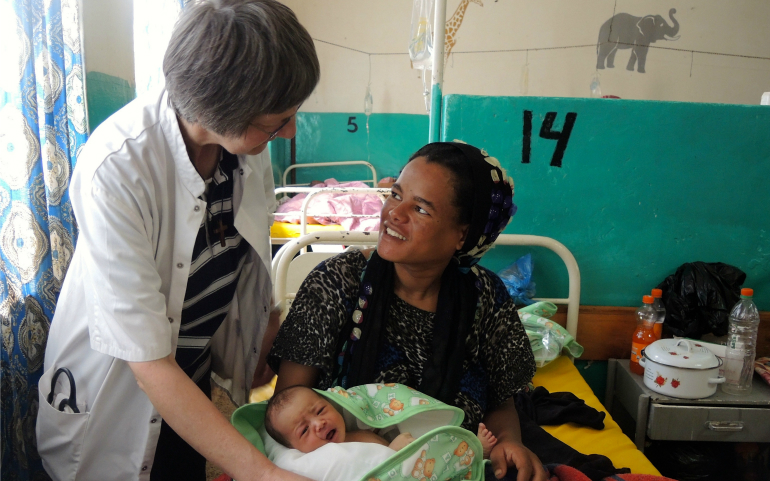
Dr. Sr. Rita Schiffer visits with a new mother. About half of the deliveries at the Attat Hospital are "abnormal" deliveries, such as Caesarean section, because high-risk mothers are referred to the hospital from across the region. (GSR photo/Melanie Lidman)
When Medical Mission Sisters founder Anna Dengel arrived in Attat in the early 1960s to inspect an abandoned monastery where the Catholic church had asked her to consider starting a hospital, she immediately knew the answer: absolutely not.
Dengel took one look at the desolate rolling hills of south central Ethiopia and knew she could not send young sisters to a place where they would be so isolated. "She said, 'I can't send my sisters to where there is no road, no electricity, no nothing!'" recalled Sr. Inge Jansen, originally from Germany, who has lived in Attat for 47 years.
But then the villagers, upon hearing there was a doctor in the area, carried in a woman in the throes of obstructed labor. They had been walking with the woman for three days in desperate search of medical help. The next place with a doctor was Addis Ababa, more than 100 miles (175 km) away, which would take days to reach. Dengel felt helpless. There was no way the woman could survive.



